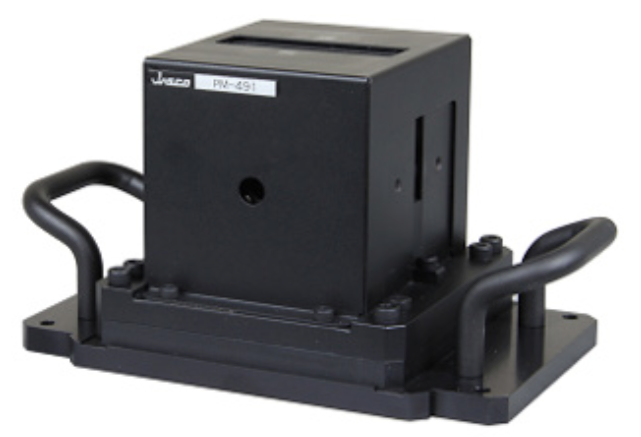Measurement of Magnetic Circular Dichroism (MCD) with the PM-491 permanent magnet

When linearly polarized light is passed through a material in a magnetic field parallel to the direction of the magnetic field, the polarization plane is rotated. The use of a magnetic field to induce optical activity in molecules is also known as the Faraday effect. ORD and CD can be used to observe these magnetic field-induced optically active molecules. These techniques are more commonly known as magnetic optical rotary dispersion (MORD) and magnetic circular dichroism (MCD). MCD is widely used today to probe the local environment of protein molecules. Chromophores with large magnetic moments arising from either rotational symmetries (aromatics, porphyrins), unpaired spins (metal complexes), or both (hemes) are sensitive to electronic perturbations and therefore provide information regarding the molecule’s electronic state. The MCD signal intensity is proportional to the magnetic field strength, which can be applied by using a permanent magnet.
Previously, in order to generate a strong magnetic field (greater than 1 Tesla) a large electromagnet was required. However, this type of electromagnet cannot easily be set inside the sample compartment of a CD spectrometer due to its excessive weight (typically greater than 60 kg). Recently JASCO has introduced the PM-491 permanent magnet. The PM-491 has a magnetic field of 1.6 Tesla and is compact so it easily fits inside the spectropolarimeter sample compartment. The direction of the magnetic field can be changed by simply reversing the direction of the magnet.
This application note provides examples of the J-1500 CD spectrometer and PM-491 permanent magnet to obtain MCD measurements.
